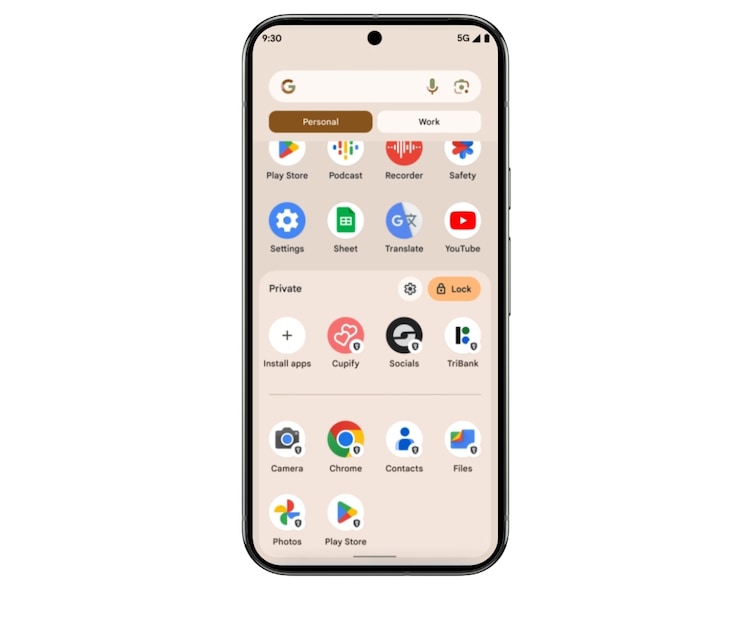
The Android Evolution: A Deep Dive into Android 15, Next-Gen Phones, and the Gadget Ecosystem
The Android Evolution: Navigating the Next Wave of Innovation
The Android ecosystem is a dynamic and perpetually evolving landscape, where software breakthroughs and hardware innovations move in a tightly choreographed dance. Each year brings a new version of the operating system, promising enhanced security, smarter features, and a more refined user experience. This constant forward momentum is the lifeblood of the latest Android news, driving manufacturers to push the boundaries of what our devices can do. As we delve into the era of Android 15, we’re not just witnessing an incremental update; we’re seeing a foundational shift towards a more private, connected, and intelligent future.
This article provides a comprehensive technical analysis of this evolution. We will dissect the most impactful features of Android 15, explore how leading manufacturers are integrating this new software into their next generation of Android phones, and look beyond the smartphone to the burgeoning universe of interconnected Android gadgets. From on-device AI and satellite connectivity to the seamless integration of wearables and smart home devices, we’ll cover the trends, technologies, and best practices that define the Android experience today and offer a glimpse into what lies ahead for its billions of users worldwide.
The Dawn of a New OS: Unpacking Android 15’s Key Innovations
Android 15 represents a significant leap forward, focusing on strengthening the platform’s core pillars: privacy, connectivity, and performance. While it introduces several user-facing enhancements, its most profound changes lie under the hood, setting a new standard for mobile operating systems. Understanding these innovations is key to appreciating the capabilities of upcoming Android devices.
Enhanced Privacy and Security at the Core
Privacy continues to be a central theme in Android’s development. Android 15 introduces the “Privacy Sandbox,” a multi-year initiative to create more private advertising solutions that limit the sharing of user data across apps and websites. For the end-user, this means more control and less cross-app tracking without breaking the ad-supported model of many free applications. Another practical privacy feature is partial screen sharing. Instead of broadcasting your entire screen during a recording or cast, you can now choose to share or record just a single app window. This is a crucial safeguard against inadvertently exposing personal notifications, messages, or sensitive information, making it a vital tool for professionals and casual users alike.
Satellite Connectivity and Communication
Moving beyond terrestrial networks, Android 15 brings native, OS-level support for satellite connectivity. This isn’t just for emergency SOS calls, a feature popularized by competitors. Google has expanded this to include SMS and RCS messaging via satellite, ensuring users can stay connected even in the most remote locations without cellular or Wi-Fi coverage. The platform provides a consistent system UI for guiding users to aim their device towards a satellite and managing these connections. This feature will be hardware-dependent, but its integration at the OS level standardizes the experience and encourages more manufacturers of Android phones to incorporate the necessary modems and antennas in future models.
Performance and Battery Life Optimizations
Every Android update aims to improve efficiency, and Android 15 delivers tangible results. The Android Dynamic Performance Framework (ADPF) has been refined, allowing the OS to better manage how high-performance tasks, like gaming, interact with the device’s CPU, GPU, and thermal systems. This results in more sustained performance without overheating or excessive battery drain. Furthermore, background processes are now more intelligently managed. The OS can freeze cached apps more effectively, reducing their resource consumption and extending standby battery life. For users, this translates to a snappier device that lasts longer on a single charge, even after years of use.

The Hardware Frontier: How Manufacturers are Adapting to Android 15
A new version of Android is only as good as the hardware it runs on. The symbiotic relationship between Google’s software and the vast array of original equipment manufacturers (OEMs) is what drives competition and innovation. With Android 15, we are seeing manufacturers not only adopt the new OS but also build hardware specifically designed to leverage its most powerful features.
The Beta Program Race and Custom Skins
The speed at which manufacturers deliver OS updates has become a key differentiator. Companies like Google (with its Pixel line), Samsung, OnePlus, and Vivo are increasingly participating in the Android Beta program, giving their users early access to new features. This early adoption is a win-win: developers can test their apps on different hardware and custom Android skins (like Samsung’s One UI or Vivo’s Funtouch OS), while manufacturers gather valuable feedback to ensure a smooth stable release. For consumers, this trend signals a commitment to software support, a critical factor when investing in a premium device. The latest Android news is often dominated by which brand is first to roll out these updates, reflecting its importance in the market.
AI Integration: The New Battleground
Artificial intelligence is no longer a buzzword; it’s a core component of the modern smartphone experience. Android 15 is built to facilitate more powerful on-device AI, and hardware makers are responding with specialized silicon. Chipsets like Qualcomm’s Snapdragon 8 Gen series and Google’s Tensor processors feature powerful Neural Processing Units (NPUs) designed for efficient AI computation. This synergy enables incredible features directly on the device, without needing a cloud connection.
- Real-World Example: A user can take a photo, and the on-device AI, powered by the phone’s NPU and optimized for Android 15’s APIs, can intelligently remove unwanted objects, enhance lighting, and even suggest creative edits in real-time. Similarly, live translation during a phone call or summarizing a lengthy article becomes instantaneous and private, as the data never leaves the phone.
Foldables, Form Factors, and Future-Proofing
Android 15 continues to improve support for large screens and unconventional form factors, particularly foldables. The OS offers better app continuity, allowing applications to seamlessly transition between a folded cover screen and an unfolded inner display. The taskbar and multitasking functionalities have also been refined, making devices like the Samsung Galaxy Z Fold or Google Pixel Fold more productive. This robust software foundation encourages manufacturers to experiment with new designs, knowing the OS can handle the unique user experience challenges they present. As a result, the market for innovative Android phones continues to expand beyond the traditional slab form factor.
Beyond the Smartphone: The Expanding Universe of Android Gadgets
The Android ecosystem extends far beyond the device in your pocket. It’s a network of interconnected hardware that aims to create a cohesive and intelligent environment. Android 15’s improvements in connectivity and efficiency have a ripple effect across this entire spectrum of Android gadgets, from your wrist to your car.
Wearables and the Wear OS Renaissance
Google’s Wear OS, which is built on an Android foundation, is experiencing a resurgence. The latest versions bring significant improvements in battery efficiency, performance, and health-tracking capabilities. Smartwatches like the Pixel Watch 2 and Samsung Galaxy Watch 6 leverage this platform to offer deep integration with Android phones. Notifications are synced flawlessly, health data from the watch appears in a unified platform on the phone, and features like “Watch Unlock” provide a seamless security experience. The platform’s efficiency gains mean that these wearables can now perform more complex tasks, like on-wrist navigation and contactless payments, while still lasting a full day or more on a charge.
The Smart Home and Ambient Computing
Android is the silent engine behind many smart home devices, including smart displays like the Google Nest Hub and televisions running Google TV or Android TV. The goal is to achieve “ambient computing,” where technology fades into the background and provides assistance proactively.
- Case Study: Imagine you are following a recipe on your Android phone. As you walk into your kitchen, the recipe automatically appears on your Nest Hub display, complete with step-by-step video instructions, all without you having to touch a button. This is possible through the tight integration of the Android ecosystem, where devices are aware of each other and their context. Android 15’s improved connectivity protocols, like UWB (Ultra-Wideband), will make this device-to-device interaction even more precise and reliable.
Automotive and In-Car Experiences
The distinction between Android Auto (which projects your phone’s interface onto a car’s display) and Android Automotive OS (a full-fledged operating system running natively on the car’s hardware) is crucial. Both are benefiting from the evolution of Android. Android Auto is becoming more adaptive to different screen sizes and orientations, while Android Automotive is enabling deeper integration with vehicle functions. This means drivers can use Google Assistant to control not just music and navigation, but also the car’s climate control or heated seats. The security and performance enhancements in Android 15 provide a more stable and secure foundation for these critical in-car systems.
Navigating the Update: Tips and Considerations for Android Users
With a major OS update on the horizon, users face important decisions about when to update and how to select their next device. Understanding the implications and following best practices can ensure a smooth and beneficial transition.
Should You Update Immediately?
While the temptation to get the latest features is strong, it’s often wise to exercise a bit of patience. Early releases, even stable ones, can sometimes have unforeseen bugs or cause compatibility issues with certain apps.

- Best Practice: For your primary device, consider waiting for the first maintenance release (e.g., Android 15.1). This usually addresses the initial bugs found after the broad public rollout. Before any major update, always perform a full backup of your important data, including photos, contacts, and documents, to a cloud service or a computer.
Maximizing New Features
To get the most out of an update, take some time to explore the new settings and features. For example, dive into the Privacy & Security menu to review the new controls offered by the Privacy Sandbox. If your device supports it, familiarize yourself with how to activate satellite messaging before you find yourself in a situation where you need it. Exploring these additions ensures you’re leveraging the full power of the new OS.
Choosing Your Next Android Phone
When purchasing a new device, look beyond the hardware specifications. A manufacturer’s software update policy is one of the most critical factors for the longevity, security, and value of your phone. Top-tier brands like Google and Samsung now promise up to seven years of OS and security updates for their flagship models. This commitment ensures your device will not only receive new features for years to come but will also be protected from emerging security threats, making it a much smarter long-term investment.
Conclusion: A More Connected and Intelligent Future
The release of a new Android version is more than just an annual software refresh; it’s a barometer for the entire mobile technology industry. Android 15 solidifies the platform’s commitment to user privacy, expands connectivity to new frontiers with satellite integration, and provides the bedrock for a new generation of AI-powered experiences. The latest Android news highlights a clear trend: the tight integration of this advanced software with purpose-built hardware is what unlocks truly transformative features in today’s Android phones.
Ultimately, the evolution of Android is about creating a more cohesive and intelligent ecosystem. From the smartphone in your hand to the watch on your wrist and the operating system in your car, these devices are becoming more aware and interconnected. For users, this translates to a future where technology is more helpful, more secure, and more seamlessly woven into the fabric of our daily lives.



